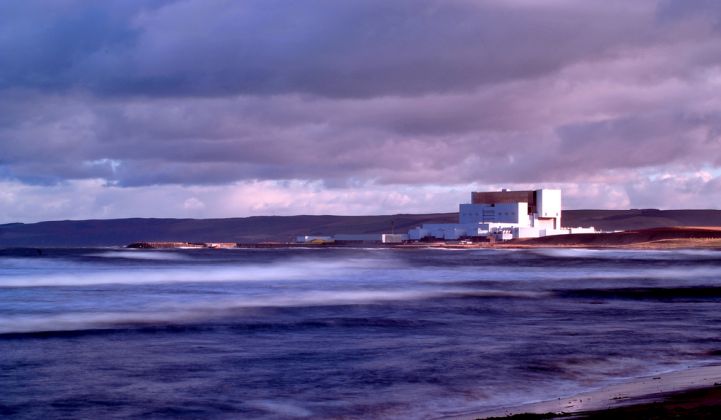The path to a fully decarbonized energy system in Europe could depend on technologies that are out of bounds in today’s market, a consultancy forecast suggests.
The major decarbonization pathways modeled by Afry (formerly AF Pöyry), an international engineering, design and advisory firm, envision big contributions from either new nuclear or carbon capture and storage (CCS) — neither of which is an energy system front-runner at present.
Afry modeled two possible avenues to decarbonize Europe's power, heat and transport sectors. One of them, called the "zero-carbon gas" pathway, involves using renewables along with other low-carbon technologies such biomethane, electrolysis, methane reforming, hybrid heat pumps and district heating to achieve deep cuts in energy system emissions.
The other, called "all-electric," calls for the complete electrification of heat and transport, with no hydrogen or biomethane and a limit to biomass consumption. Both pathways can be used to achieve 100 percent decarbonization of the European energy system by 2050, Afry believes.
However, the all-electric pathway is €94 billion ($102 billion) more expensive per year by 2050, Afry estimates. This is mainly due to the cost of electrifying the heating and transport sectors, as well as a need to strengthen electricity networks to cope with much higher levels of utilization.
The all-electric scenario also requires 190 gigawatts of new nuclear capacity to complement 1.1 terawatts of extra wind and 600 gigawatts of additional solar up until 2050.
The trouble is that the prospects for new nuclear in the European Union are not good. Although the continent gets a quarter of its electricity from nuclear, as of January 2020 the World Nuclear Association noted that only three EU countries — Finland, France and Slovakia — were building new reactors, and all of them had experienced cost overruns and delays. (Projects are also underway in several non-EU countries in Europe, including the U.K.)
CCS: The cheaper option?
Based on Afry’s analysis, a zero-carbon gas pathway looks like a more feasible route to decarbonization in terms of cost. One of the main attractions of the scenario is that it uses biomethane and hydrogen to power non-process heating.
But this path, too, could be fraught in terms of technological viability. Despite growing hype, clean hydrogen remains in its infancy. Afry’s model anticipates there would have to be 25 terawatt-hours of hydrogen combined-cycle gas turbine generation a year by 2050.
More importantly, the model also requires 135 terawatt-hours a year of CCS to decarbonize natural gas and biomethane used for process heat. According to the Global CCS Institute, there are only 19 CCS plants in operation in the world today, plus four more under construction.
Afry, which has developed its pathways as part of multiclient studies dating back almost two years, said that other scenarios are possible. However, the importance of technologies with low market acceptance in both models is potentially significant for policymakers not just in Europe but also in other carbon-fuel-reliant economies, such as that of the U.S.
Based on Afry’s research, “a solution that ignores hydrogen and carbon capture, utilization and storage just isn’t optimal,” said Richard Sarsfield-Hall, a director at Afry Management Consulting in Oxford, U.K. “Any process emissions have to be offset by something.”
The European Commission's €1 trillion Green Deal has a provision to develop CCS, but nuclear power was not included in the roadmap to becoming net-zero by 2050.
Potential criticisms of the study
One possible criticism of Afry’s work is that it was partly funded by fossil-fuel interests including a German gas industry association. Furthermore, Sarsfield-Hall acknowledges that the all-electric pathway analysis had only considered established nuclear technologies and not small modular reactors.
Proponents say such reactors could be cheaper and more flexible than legacy models, although SMR nuclear technology is even further away from market acceptance than CCS.
Charlie Bloch, a principal at the U.S.-based Rocky Mountain Institute, questioned the objectivity of the research and said it would be difficult to provide a detailed assessment of Afry’s findings without further insights into the consultancy’s underlying methodology.
And Katie Mulvaney, an associate with the Rocky Mountain Institute's emerging solutions program, commented: "It looks like Afry is assuming annual capacity growth rates for solar energy that are much lower than actual installation rates. We see this problem with renewable technology like wind and solar across a lot of models."
Nevertheless, she added, in trying to factor in how to decarbonize areas such as industry and heavy transportation, “They have hit on an interesting energy challenge.”




